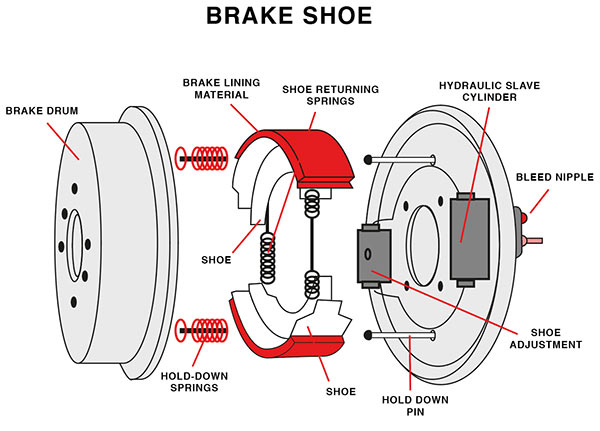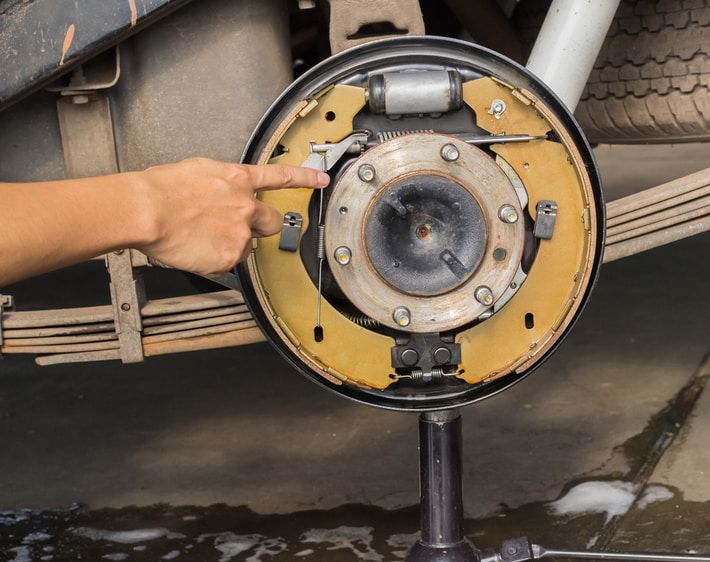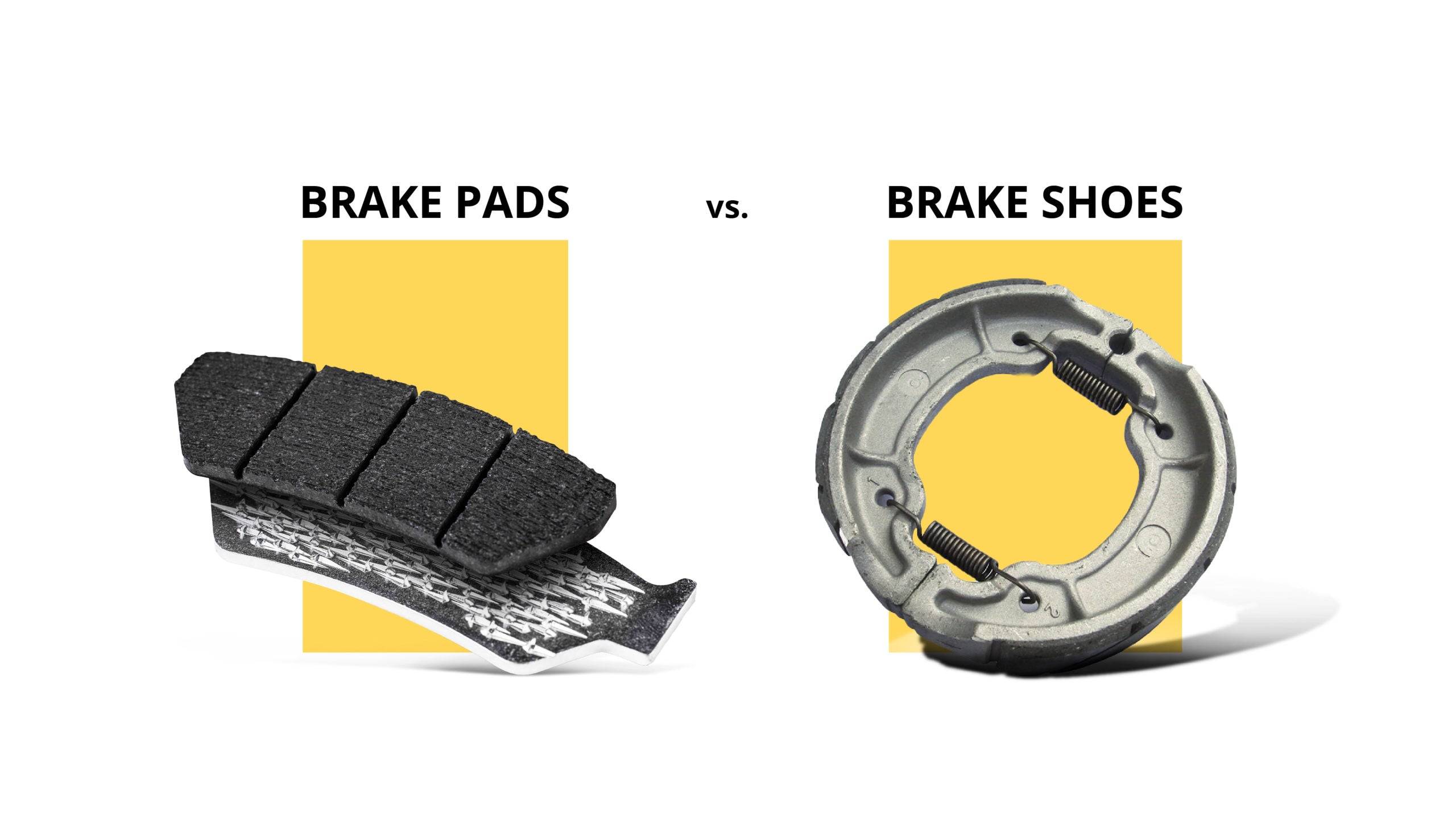Have you ever wondered if brake shoes and pads are the same thing? Maybe you’ve heard these terms thrown around at the mechanic’s shop, or perhaps you’re just curious about how your vehicle’s braking system works.
It’s a common question, and understanding the difference can be crucial for your safety on the road. Imagine driving with confidence, knowing exactly what keeps your car stopping smoothly and safely. By the end of this article, you’ll have a clear picture of how these components work, and you’ll be equipped with the knowledge to make informed decisions about your vehicle’s maintenance.
Keep reading to discover the secrets behind brake shoes and pads, and ensure your next drive is as safe as it can be!
Brake Shoes Vs. Brake Pads
Brake shoes and brake pads are parts of a braking system. Brake shoes work in drum brakes. Brake pads work in disc brakes. Both help stop a vehicle. They push against a surface to create friction.
Brake shoes are curved and fit inside a drum. When you press the brake, they move outward. This creates friction inside the drum. Brake pads are flat and squeeze a spinning disc. This disc is called a rotor. The pads clamp down on the rotor to stop the wheels.
Materials used are different. Brake shoes are often made from hard material. Brake pads use softer materials. This helps in reducing noise. Maintenance is essential for both. Check them regularly to ensure safety.

Credit: www.championautoparts.com
Functionality Differences
Brake shoes and pads serve similar purposes but operate differently. Brake shoes fit inside drum brakes, pressing outward to create friction. In contrast, pads are part of disc brakes, squeezing the rotor to slow down the vehicle. These components ensure effective stopping power in various braking systems.
How Brake Shoes Work
Brake shoes are parts of drum brakes. They are curved pieces of metal. A special material covers them. This material is called friction material. Brake shoes press against the inside of a drum. This drum is attached to the wheel. When they press, they create friction. This friction slows the wheel. Brake shoes are mostly found in older cars and some trucks. They work well for stopping heavy vehicles. They last a long time but take more space.
How Brake Pads Work
Brake pads are parts of disc brakes. They are flat and small. They have a special surface for friction. Brake pads push against a metal disc. This disc is attached to the wheel. When they push, they stop the wheel. Brake pads are found in most modern cars. They are good for quick stops. They are smaller than brake shoes. They also wear out faster. Changing them is easy and quick.
Materials Used
Brake shoes often use metallic fibers. These fibers help in heat resistance. Asbestos was common in the past. Now, safer materials replace it. Ceramic fibers are also used. They offer quiet braking. Organic materials like rubber are eco-friendly. They are soft and wear faster.
Brake pads have semi-metallic materials. These include iron and steel. They last long but are noisy. Ceramic pads are smooth and silent. They are costly but perform well. Organic pads use materials like glass and rubber. They are gentle on rotors. They wear out quicker.

Credit: www.firestonecompleteautocare.com
Applications In Vehicles
Brake shoes are used in drum brakes. They sit inside a round drum. When you press the brake, the shoes press outward. This stops the wheel from spinning. They are often found in older cars or trucks. Brake shoes are strong and can last a long time. They are also less expensive than other brake parts. Many people choose them for their price. They work best in the back wheels of a vehicle.
Brake pads are used in disc brakes. They press against a flat disc. This disc is also called a rotor. When the pads push, the car slows down. Most modern cars use disc brakes. Brake pads are easy to change. They wear out faster than brake shoes. But they stop cars quickly and safely. Many people like them for their performance. They work well in both front and back wheels.
Performance And Efficiency
Brake shoes are found in drum brakes. They are very strong. They last a long time. These shoes are inside the brake drum. They push out to stop the car. This makes them efficient. They work well in heavy vehicles. They are less likely to wear out quickly. They also need less maintenance. This means they save time and money. But they might not stop the car as quickly as brake pads.
Brake pads are used in disc brakes. They are very effective. They stop cars quickly. This is good for fast cars. Brake pads are outside the wheel. They press against the disc to stop the car. They can get hot. This might wear them out faster. But they give a smooth stop. They are good for daily use. They might need more care than brake shoes.
Cost Considerations
Brake shoes usually cost less than brake pads. Their price can be as low as $20for basic options. Some can go up to $100for high-quality types. The cost depends on the brand and material. Cheaper shoes might wear out faster. Choose wisely for safety.
Brake pads are often more expensive. Basic sets start at around $30. High-end pads might reach up to $200. The price varies by brand and type. Ceramic pads can cost more than organic ones. Better pads last longer and stop quicker. Always consider your budget and needs.
Maintenance And Longevity
Brake shoes need regular checks for safety. Dust and dirt can cause problems. Clean them often to keep them working well. Use a soft cloth to wipe away dirt. Check for wear. Worn brake shoes need replacement. They make your car safe. Listen for strange noises. Squeaks mean it’s time for new ones. Always use good quality parts.
Brake pads also need care. They stop your car safely. Check them every 10,000 miles. Look for thin pads. Thin pads need changing. This stops damage to other parts. Clean brake pads with a soft brush. Avoid harsh cleaners. Listen for squealing sounds. This means they need replacing. Good brake pads keep you safe. Always choose reliable ones.
Choosing The Right Component
Understanding the difference between brake shoes and pads helps in choosing the right component. Brake shoes are used in drum brakes while brake pads fit disc brakes. Each serves the same purpose but functions differently, impacting vehicle performance and safety.
Factors To Consider
Brake shoesand brake padshave important roles. Shoes fit inside a drum. Pads press against a disc. Each has its benefits. Shoes are great for heavy vehicles. Pads offer strong stopping power. Consider your vehicle type. Think about driving habits. Heavy loads mean more wear. Regular checks are key.
When To Use Brake Shoes
Brake shoes work well in trucks. Also in buses. They are best for slow stops. Shoes last longer. They handle heavy loads. Shoes are inside the drum. This protects them. Shoes need less maintenance. They are cost-friendly. Ideal for rear brakes. Shoes are reliable for many miles.
When To Use Brake Pads
Brake pads are great for cars. They are on the wheel. Pads stop quickly. They give good grip. Pads are best for quick stops. Great for front brakes. They wear faster than shoes. Pads are easy to replace. They work well on smooth roads. Ideal for daily driving.
Common Misconceptions
Many people think brake shoes and brake pads are the same. They are not. Brake shoes go inside drum brakes. Brake pads work with disc brakes. These parts stop cars. But they do so in different ways.
Brake shoes are curved. They press outwards. Drum brakes surround them. Brake pads are flat. They press onto a disc. This disc spins with the wheel. Both shoes and pads wear out. They must be checked often.
Knowing the difference helps. It ensures safety. It saves money. Cars need good brakes. Always remember this.

Credit: nrsbrakes.com
Conclusion
Understanding brake shoes and pads is essential for safe driving. Both are key parts of the braking system. Brake shoes work inside drums, while pads grip discs. Each has a unique function. Choosing the right one depends on your vehicle type.
Regular checks ensure your brakes work well. Good maintenance saves money and prevents accidents. Always ask a professional mechanic if unsure. Remember, brakes are vital for safety on roads. Keep them in top shape for smooth journeys. Stay informed, and drive with confidence.
